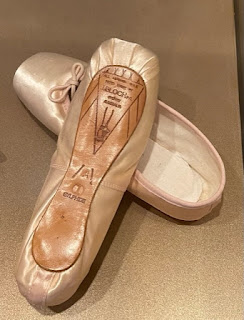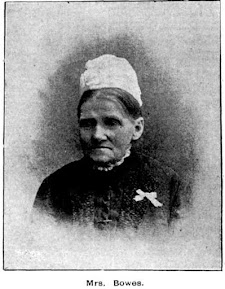The King of Dancing Shoes
This week's blog is not punctuated with injury
and death but is one filled with inspiration - and hard work. It is also a tale
of displaced migrants making the long journey to Australia to start a new life.
JACOB SIMON BLOCH
Jacob was born in May 1898 in Lithuania and named Yaacov Shimon, son of Lozer Blochas, painter and cobbler, and his wife Chaja. Shoemaking was in the family's DNA and at the age of 11 Jacob was apprenticed to a shoemaker. Jacob also studied dance until he was 15, when he moved to the larger city of Verniai to work as a cobbler. It was in Varnia that he married Zise Sandler, a bootmaker's daughter, in 1919.
Polly, Zise's sister, and her British husband had
migrated to Australia in the late 1920's. With their help Jacob arrived in
Sydney in 1930, in the middle of the Depression, with the aim to find ample
work to allow Zise and his children to follow him here.
Determined to make a success of his decision to
migrate to these shores, with limited English, he went from shop to shop seeking work as a cobbler.
At one store, a display of ballet shoes gave him an idea and at a studio he
visited he observed a young ballerina having difficulty getting onto her toes.
Bloch decided that he would establish his own business in a niche market. He
rented a small space in Oxford Street Paddington and commenced making dance
shoes to order. Bloch's vast array included flat ballet slippers, pointe shoes,
tap shoes as well as character shoes. In 1933 he was doing well enough to be
able to support Zise and his three children upon their arrival in Australia
that year.
Bloch Ballet shoes - author's photograph of display at the Jewish Museum Sydney
Three years later Bloch expanded to larger
premises in Taylor Square Darlinghurst. During the 1930's many ballet companies
toured Australia including the Dandrea-Levitoff Company and the Ballets Russes
of Monte Carlo, who toured in 1936, 1938 and 1939. Famous dancers from those
companies such as Irina Baronova and David Lichine bought and wore his shoes.
When Russian-speaking dance companies came to
Sydney, Bloch visited the dancers and acted as an interpreter, whilst also
taking orders for his strong and long-lasting shoes.
Jacob was more a craftsman rather than a
shrewd businessman and his business grew slowly as his output was only about
fifty shoes per week. Most orders were finished on time but to Bloch it was all
about the quality of the finished product and as such he was never a wealthy
man.
In 1950 Bloch opened a small factory in Botany
but the sea air affected the drying time of his glue-stiffened pointe shoes. In
1959, he opened a new factory in inner city Zetland and a city shop in the
Piccadilly Arcade.
Photograph of Jacob Bloch in his factory - courtesy of The Australian-Jewish News (with thanks)
"Jack" Bloch, as he was known, loved to
play cards, enjoyed a good party and was known to lead the dancing at community
get-togethers.
A heavy smoker all his life, Bloch suffered a fatal heart attack on 12 April 1961 at his home in Waverley in the
eastern suburbs of Sydney. He was buried in the Jewish cemetery at Rookwood, leaving a wife, two sons, one daughter and many people who
knew him both socially and in a business capacity to mourn his loss.
Headstone for Jacob Simon Bloch - author's own
After his
death, his daughter Betty and her husband, who had joined the business some
years earlier, expanded the company into a one-stop dance shop.
Today, Bloch is arguably one
of the world’s leading
provider of technical dance footwear and apparel. Pointe shoes are still made by hand. Jacob's grandson,
David now heads the company and the tradition of putting the needs of dancers
first and foremost is still the number one driver of the company.
Example of Tap shoes - Australian Dictionary of Biography
Many
leading dance companies throughout the world rely on Bloch to shoe their
dancers including the Royal Ballet, The Bolshoi Ballet, American Ballet Theatre
and our own Australian Ballet. Bloch’s stores are found throughout Australia
and supply to all dancers from tiny tots to seniors.
Yaacov Shimon would be extremely proud of the
legacy he has left to the world.
I have gathered information for this blog today
from the Australian Dictionary of Biography, The Jewish Museum, Sydney – I recommend
a visit there highly – Bloch’s website and other Trove searches; all freely
available.
If you have any comments, please add them below or go
to the Facebook Group page at
rookwoodcemeterydiscoveries
or contact me personally via my email
lorainepunch@gmail.com







Comments
Post a Comment